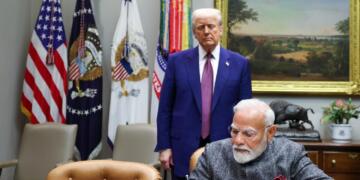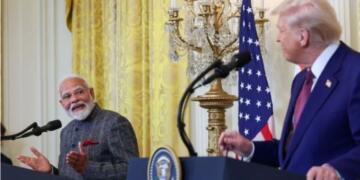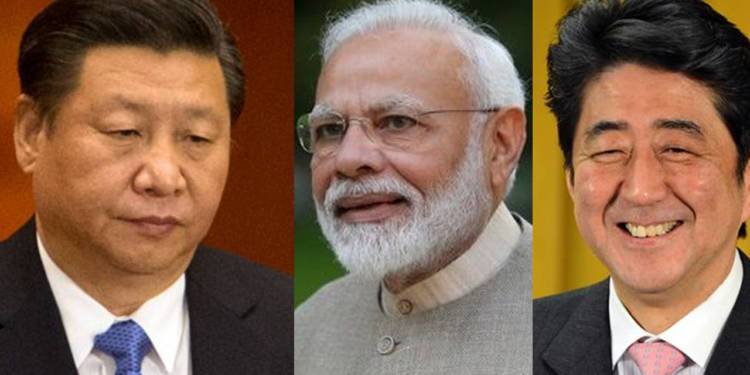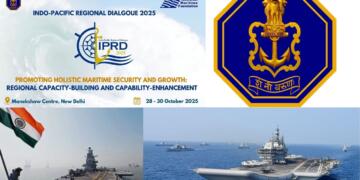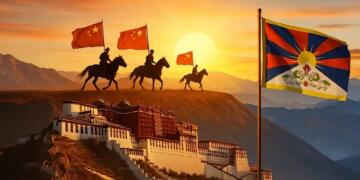Chinese strategists love talking about the possibility of a two-front war against India with China at the LAC and Pakistan at the LoC. Now, India is ready to give China an even bigger two-front war with India on China’s South/ Southwest and Japan on China’s East. This is in line with the activation of the Quad- an informal alliance of Japan, India, Australia and the US formed to contain China.
While all the four Quad countries have interests in restricting China’s growing influence in the Indo-Pacific, it is India and Japan who are directly engaged with the rogue nation. While India is the only country to have exchanged hostilities and shed blood at the border with China, Japan is the only other powerful QUAD country that shares direct hostilities with China near the Senkaku Islands in the East China Sea.
The role of Australia and the US is more or less restricted to ensuring freedom of navigation and patrol in the international waters of the South China Sea, which Beijing wants to occupy illegally. But India and Japan are the ones who share territorial/ maritime disputes with Beijing, and have to take China head-on and do the dirty job of beating back the Chinese People’s Liberation Army (PLA) in a conflict situation.
In fact, the US and Australia also recognise the need for a stronger Indo-Japan security cooperation mechanism within the Quad. Recently, the US and Australia reaffirmed their commitment to Quad consultations with India and Japan. A strong Indo-Japan security mechanism will not dilute the Quad, rather it will become an intrinsic part of a formal Quad arrangement, if and when, Quad is documented officially.
There was never a stronger case for an Indo-Japan defence arrangement. New Delhi and Tokyo continue to face a tense situation with China. In Eastern Ladakh, there has been no real disengagement between the Indian Army and the Chinese People’s Liberation Army (PLA) at the Line of Actual Control- the de facto Indo-Tibetan border.
Writing for India Today, Shiv Aroor has reported that China has refused to even discuss the Pangong Tso lake area. This is the site where the ongoing military stand-off between India and China originated after the Indian Army and PLA troops engaged in a scuffle on May 5. The PLA has been deploying its troops between Fingers 4 and 8 in the Pangong Tso area. India believes that the LAC passes through Finger 8, while Beijing considers it coterminous with Finger 4.
Chinese troops are reportedly sitting several kilometres inside the Indian perception of the LAC. New Delhi has made it clear that things will not move forward like this and India’s patience could be wearing thin. The all-important question is for how long can a Galwan battle 2.0 be avoided? Meanwhile, there are reports of China moving a PLA battalion near India’s Lipulekh pass- a feature that Nepal’s Prime Minister KP Sharma Oli has been trying to dispute at the behest of China.
On China’s Eastern side, Sino-Japanese tensions are soaring even as Beijing completed an unsettling milestone of sending its vessels to waters near Japan’s Senkaku Islands for a hundred straight days. Tokyo has labelled Chinese moves a “relentless” campaign to take control of the disputed Islands.
Japan had purchased the Senkaku Islands from a private owned in the year 2012. But an expansionist China claims sovereignty over the Japanese Islands and calls them Diaoyu. Of late, Japan has grown very assertive about its territorial sovereignty over the Senkaku Islands. It is a likely friction point between China and Japan.
China has made a huge miscalculation by trying to bully India and Japan at the same time. Its aggression on both fronts are unprecedented. As such, New Delhi and Tokyo realise the importance of a bilateral understanding and cornering China from both sides.
In fact, India and Japan are closer than ever before amidst the growing Chinese expansionism. After the Galwan valley bloodbath, the entire democratic world had stood firmly behind India. But Tokyo was the most vocal of them. Japan’s Ambassador Satoshi Suzuki sent his, “deepest condolences to the people of India.” Moreover, Japan was the only country to mention that the bloodshed “may have an impact on regional stability”.
Japan also backed India strongly amidst the ongoing military stand-off and made it clear that Tokyo was opposed to any “unilateral attempt to change the status quo” on the Line of Actual Control (LAC).
Japan’s condolences were a message that there is a lot to be explored between India and Japan. Moreover, there have also been reports that India and Japan are preparing to ink a military logistics pact that will ensure greater synergy between the defence forces of the two countries.
Moreover, Japan also wants to form a live intelligence-sharing network to keep a tab on Chinese movements, of which India will be a part. Japan must realise that while the US remains its main military ally, it should also look for a strong regional partner in India, which is in turn, a strong US ally itself.
Japan and India have strong, time-tested ties and now they must become iron brothers who can mount the pressure on China. Together, they can warn Beijing that it will be hammered from both sides if it tries to bully any one of them. Japan is a tech leader and India has battle-hardened and well-trained military forces. By joining hands, they can also augment capabilities and become stronger military forces in their own right.
As China steps up aggression in East China Sea and the Himalayas, it must remain careful or else face the wrath of a two-front war.




